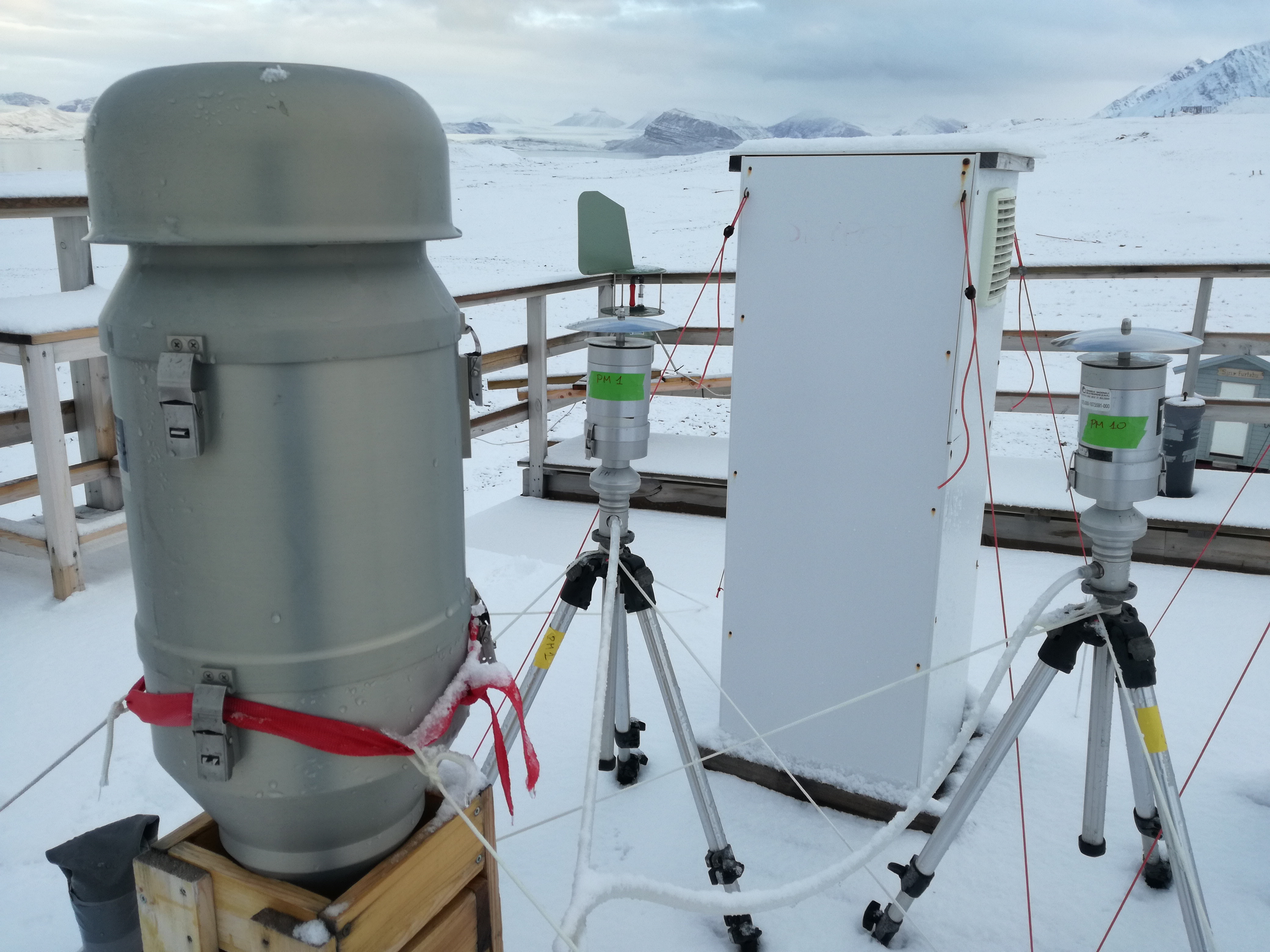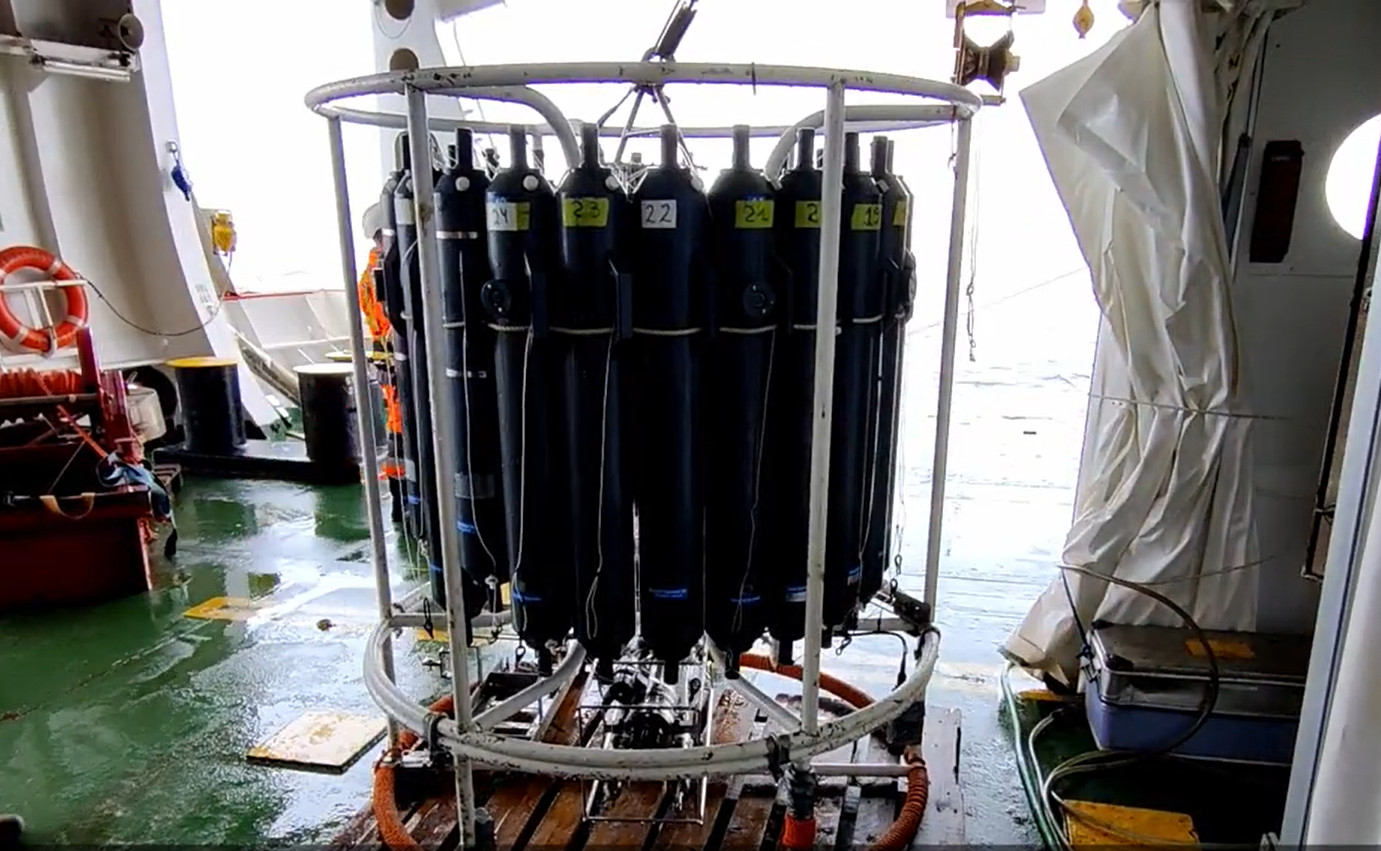ASCII
Type of resources
Available actions
IADC Research Activities
Topics
Keywords
Contact for the resource
Provided by
Years
Formats
Representation types
Update frequencies
status
Scale
-
Atlantification of Arctic ocean is causing a sharp increase in temperature and salinity around Svalbard Islands and in Kongsfjorden. Such phenomenon and the input of sediment-rich glacial meltwater influence salinity, water column turbidity, and light penetration with ecological implications on the microbial features.
-
Snow water equivalent at the Gruvebadet Snow Resarch Site
-
Sampling of PM10 aerosol using a cascade impactor to define the chemical composition in six different size stages. The quartz filters were extracted with ultrapure water and water soluble species were determined: major ions, MSA, carboxylic acids, amino acids, sugars, phenolic compounds, and other organic water-soluble emergening pollutants.
-

Aerosol sampling by a High-Volume Sampler (TECORA eco-highvol equipped with digital PM1 sampling inlet, nominal flow 500 lpm) for the collection of ambient aerosol particles with aerodynamic diameter < 1 μm (PM1) on pre-washed and pre-baked quartz-fiber filters (PALL, Ø= 18cm). Sampling time: 3-4 days per sample. A multi-technique analytical approach for the characterization of the sampled organic aerosol: Organic matter (OM) and Organic Nitrogen (ON). Analytical techniques employed are based on nuclear magnetic resonance spectroscopy (NMR) and Aerosol Mass Spectrometry (HR-TOF-AMS applied off-line) for the OM characterization, C and N elemental analysis (CN-EA) and ion chromatography (IC) for inorganic ions and alkyl-amines. -NMR functional groups (Aromatics, anomeric/vynilic, H-C-O, H-C-C=, H.C) -NMR tracers: Levoglucosan, Methane-sulphonic acid (MSA), Hydroxymethane-sulphonic acid (HMSA), Amines (mono-, di- and tri-methyl amines, etc.) -HR-TOF-AMS (off-line): main species (Org, SO4, NO3, NH4, Chl), elemental ratios (OM:OC, O:C, H:C) & tracer fragments (m/z43, 44, 60 etc.) -NMR & AMS OA source apportionment
-

The Italian project CASSANDRA is part of the international framework of the Synoptic Arctic Survey which seeks to collect oceanographic data in the Arctic Ocean in the two-year period 2020-2021 involving the coordination of many research vessels belonging to different nations. The aim is to determine the current state and major ongoing changes in the Arctic marine system by generating an oceanographic dataset that allows for a comprehensive characterization of Arctic hydrography and circulation, carbon uptake and ocean acidification, the distribution of possible pollutants, the functioning and productivity of organisms and ecosystems.
-

Atmospheric Gondola for Aerosol Profiles (AGAP) The scientific goals of AGAP are to develop novel aerosol payloads and evaluate the vertical distribution of aerosol properties in the Arctic Boundary Layer. Dataset consists in Aerosol vertical profiles gridded at a 50 m spatial resolution: R, T, P, RH, Aerosol size distribution, BC concentration, O3. Maximum altitudes 1500 m.
-

EEE@NYALESUND (EEENYA) The Dataset contains flux of cosmic rays measured at different locations at Ny Alesund. Each cosmic ray event will be tagged in time using GPS. Cosmic rays data will be correlated with atmoshperic conditions, also contained in the dataset. Measurement site: Ny Alesund: 1. Dirigibile Italia Station, 2. Gruvbadet laboratory, 3. close to the Amundsen-Nobile tower
-

Ionospheric Scintillations Arctic Campaign Coordinated Observations (ISACCO) the project aims the monitoring of Total Electron Content and scintillations by suitably modified GNSS receivers sampling at 50 Hz for ionospheric modelling in NyAlesund
-
The dataset includes fourteen seawater surface sampling points taken with Niskin bottles on board the MS-Teisten (Kings Bay)
-

Chronobiology of polar organisms (Chronopolar) Monitoring water parameters in surface and deep (3.0 meters) using DS18B20 + rasberry-pi. Sample collection: Lepidurus arcticus.